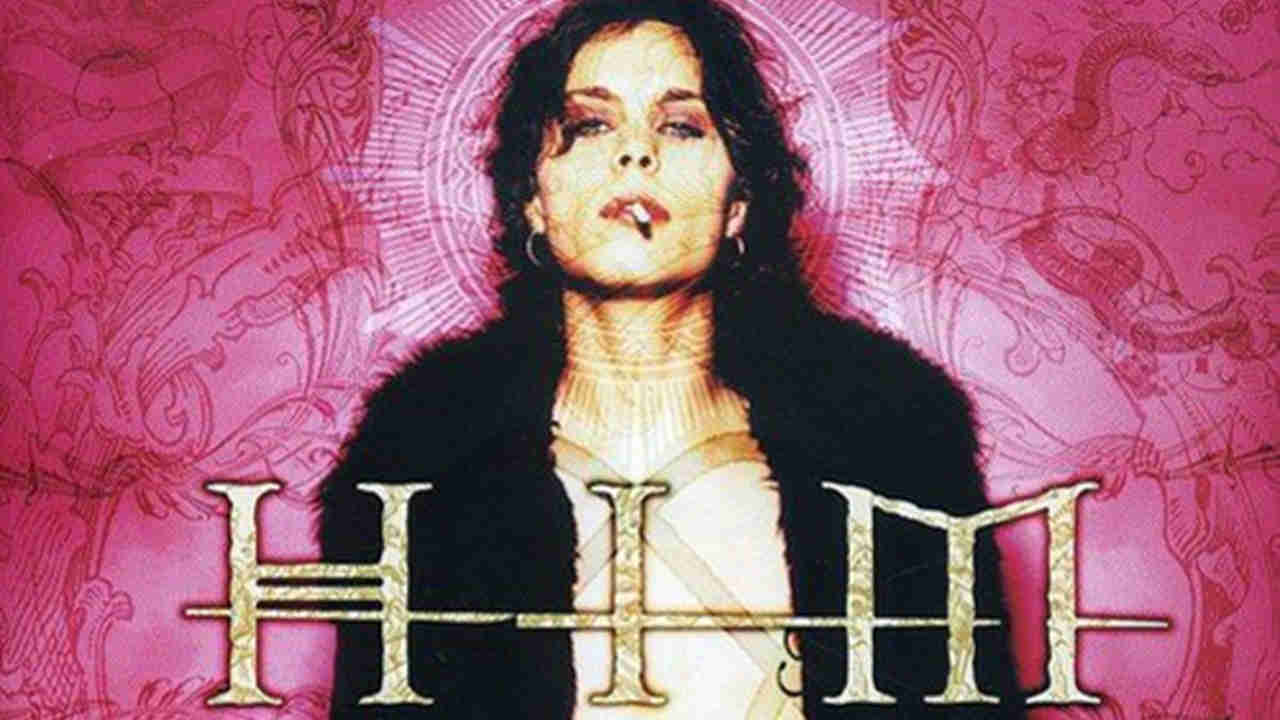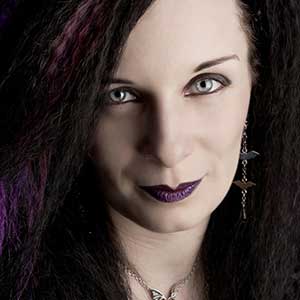Following the success of their debut Greatest Lovesongs Vol. 666, HIM were hot property both in Finland and Germany, even though few had yet heard of them in the UK. The album had gone platinum in their home country, with singles Your Sweet Six Six Six and Wicked Game being regularly spun in Europe’s alternative clubs. Offers of gigs, festival slots and TV appearances came flooding in; things were starting to happen, so HIM’s next step was crucial.
Initial work on what would become Razorblade Romance began with Hiili Hiilesmaa in Helsinki’s famous Finnvox Studios, but there were delays due to line-up changes and touring commitments prompted by their sudden success in Germany. They parted company with drummer Pätkä and keyboard player Antto, recruiting Gas Lipstick and Juska in their places; although the album would be Juska’s only record with HIM, it marked the beginning of a long working friendship with Gas. The material they recorded with Hiili was discarded and work began afresh in the UK.
HIM then relocated to Rockfield Studios in Wales with producer John Fryer, the man responsible for tweaking Fields Of The Nephilim’s debut Dawnrazor and Nine Inch Nails’ Pretty Hate Machine. Their choice of venue had apparently been inspired by Black Sabbath’s recent use of it as their rehearsal base; Ville later told interviewers that he enjoyed the idea of using the same vocal booth as Ozzy, describing HIM as a “Black Sabbath tribute band playing all original material”.
Razorblade Romance represented a very subtle reinvention of HIM’s sound. Their earlier doom influences were now dramatically played down, and woven in with metallised threads of dark pop and glam. Ville was already known for his deep vocals and melancholic songs about lost love, but his new lyrics were even more personal than before, at times reading like an open diary. He experimented with his vocals and gave the songs a greater vulnerability, and coaxed the album into sounding more like their live shows than their debut. Perfecting their trademark Love Metal sound, Razorblade Romance would swiftly earn near classic status among fans and critics alike.
Their debut’s sepia-toned fallen angel imagery was exchanged for an eye-popping pink cover, which saw Ville adopting the look of a Scandinavian glammie in what he claimed was an attempt to move away from HIM’s gothic persona. Either way, his sexy poses attracted a larger female audience and, despite all the black leather and lip gloss, he never really managed to shake off the goth mantle – performing alongside such bleak icons as The Sisters Of Mercy and Fields Of The Nephilim that summer probably didn’t help much either.
In May 2000, the UK got a slightly different version of azorblade Romance, five months after the rest of Europe. It was their first release here and opened with a poppier version of Your Sweet 666, which, like their cover of Chris Isaak’s Wicked Game, was specially re-recorded for the occasion – both songs were released as singles here too. Although their structures remained unchanged, John Fryer added more emphasis on melody and huge choruses which were balanced out with just the right amount of heaviness.
Dark ballads Poison Girl and Gone With The Sin acknowledged the band’s doom roots but fed them with new warmth, while the passionate, piano-led Join Me In Death was the epitome of modern gothic rock. Shortened to just Join Me, it went on to become the biggest-selling Finnish single and courted controversy with lyrics that some suggested encouraged suicide. Ville defended the song explaining it was simply a rock interpretation of Shakespeare’s Romeo And Juliet. It can be heard on sci-fi movie The Thirteenth Floor, and the soundtrack to Resident Evil: Apocalypse.
Elsewhere, the galloping rhythms and spine-tingling guitars on Right Here In My Arms and I Love You confirmed the Finns could write fantastically catchy rock songs. An additional ballad, One Last Time, closed the European version and helped send it to the top of album charts in Finland and Germany. But in the UK they remained the outsiders; HIM fitted into neither nu-metal nor the goth scene, which at that time was dominated by electronic music. However, good things weren’t so very far away; Bam Margera was part of the audience at one of their first London shows and would soon help raise their nternational profile in a very big way.
HIM had always known the UK market would be tough to crack, so when they finally succeeded three years later, no one was more surprised than the band themselves. But given the talent evidenced on Razorblade Romance, HIM’s breakthrough was inevitable.
Originally published in Metal Presents: HIM

